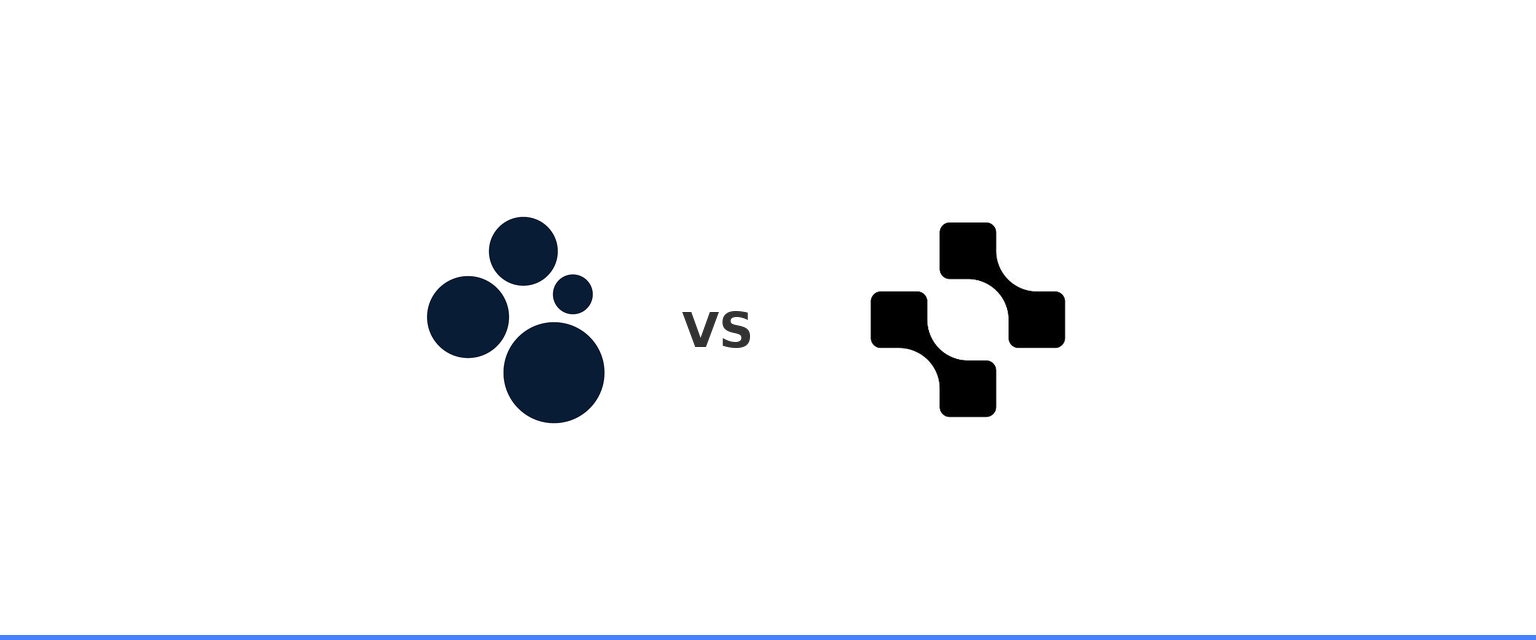Manufacturing operations teams face a key decision when choosing a video analytics platform. Spot AI and Squint AI represent two distinct approaches to workplace optimization—one offering broad video analytics for safety and operations, the other focusing on augmented reality-guided training. This analysis breaks down how each platform addresses enterprise needs across deployment, capabilities, and measurable business outcomes.
Squint AI positions itself as a Manufacturing Intelligence platform that converts videos, spreadsheets, and PDFs into immersive procedures for operator training and knowledge capture. The San Francisco-based company serves automotive, food and beverage, oil and gas, and other industrial sectors with AR-powered tools designed to standardize tribal knowledge and deliver step-by-step operating procedures.
Understanding which platform aligns with your operational goals requires examining their fundamental differences in scope, deployment approach, and value delivery. Our analysis breaks down the key distinctions to help operations, IT, and safety teams make informed decisions based on their specific needs.
Company positioning and market focus
Spot AI operates as an all-in-one video AI platform that converts existing cameras into sources of operational data for IT, Safety, Security, and Operations teams across manufacturing, retail, and construction sectors. The platform's pre-trained Video AI Agents detect critical events like unauthorized vehicle entry, missing PPE, and restricted area access in near-real time, allowing for immediate responses to reduce incidents and improve operations.
Squint AI takes a narrower approach, focusing exclusively on manufacturing intelligence through AR-guided procedures and operator performance optimization. The company targets key industries including automotive, food and beverage, oil and gas, heavy industrials, and consumer packaged goods. Their core mission centers on making "every operator an expert" through immersive training and knowledge capture tools.
This fundamental difference in scope creates distinct value propositions. Spot AI addresses broad operational needs across safety monitoring, security monitoring, and process improvement, while Squint AI focuses on operator training and procedural standardization. Organizations seeking wide operational visibility gain measurable benefits from Spot AI's multi-domain approach, while those focused primarily on operator skill development may find limitations with Squint AI's narrower tools that prioritize training over broad operational data.
Core technology and deployment models
The deployment approaches between these platforms reveal significant differences in implementation complexity and infrastructure requirements. Spot AI employs a plug-and-play hardware approach that bridges on-premises cameras to a secure, cloud-native dashboard, enabling organizations to leverage existing camera investments without wholesale replacement. The system supports camera-agnostic integration with most IP camera models and RTSP streams, which simplifies phased implementation across multiple sites.
Squint AI is a software-only, mobile-first platform delivered as cloud SaaS. It runs on standard smartphones, tablets, and computers without requiring special hardware. The system employs the device's camera along with AR markers and QR codes to deliver step-by-step guidance directly at machines. However, it doesn't connect with existing security cameras or video management systems. While Squint AI claims to offer straightforward deployment for administrators and supports enterprise login options with security compliance (SOC 2 Type II), they don't publicly share details about how the system handles data storage or network requirements.
Deployment Comparison
Spot AI
Squint AI
Hardware approach
Plug-and-play bridge device
Software-only, mobile-first (phones/tablets/computers); no proprietary hardware
Camera compatibility
Works with existing cameras
Uses the device camera for AR guidance; no integration with existing CCTV/IP cameras or RTSP streams
Deployment model
Cloud, on-premises, hybrid
Cloud (SaaS); SOC 2 Type II compliant; no public indication of an on-prem option
Multi-site support
Centralized dashboard for 25+ sites
Enterprise cloud admin tools; in use across multiple plants
Implementation timeline
System live in days
Fast to pilot with straightforward deployment
The lack of deployment detail from Squint AI contrasts with enterprise expectations for clear technical specifications. Organizations requiring predictable rollout timelines and infrastructure planning may face challenges evaluating Squint AI's fit without understanding deployment requirements.
Video analytics and operational capabilities
The platforms diverge significantly in their approach to video analytics and operational monitoring. Spot AI's wide-ranging video AI capabilities span multiple operational domains with specific detection templates for safety, operations, and security use cases.
Safety monitoring capabilities
Spot AI delivers detection across critical safety scenarios:
Squint AI's video capabilities focus on converting existing video content into procedural guidance rather than live event detection. While the platform offers analytics to understand operator behavior patterns, it lacks object detection, person detection, incident detection, or advanced search capabilities essential for preventive safety management.
Operations optimization features
For improving operational performance, Spot AI delivers targeted solutions that directly impact productivity:
Squint AI demonstrates capabilities in workflow support through standardized operating procedures combining text, video, and spatial guidance. The platform allows for the creation and enforcement of standard work instructions with AI-powered on-the-job help. It cannot monitor live adherence or prevent safety violations as they occur, limiting its value for preventive operational management.
Integration ecosystem and scalability
Enterprise integration capabilities represent a key evaluation factor for long-term platform value. Spot AI emphasizes open APIs and straightforward integration with existing infrastructure, allowing connections with project management systems, CMMS platforms, and enterprise workflows. The unified dashboard supports unlimited seats, which simplifies organization-wide adoption without per-person licensing constraints.
Squint AI supports enterprise SSO and badge-based logins and emphasizes no lengthy integrations, but does not publish developer API docs or a catalog of third-party integrations. While the company says its admin console offers straightforward management, the lack of public information makes it difficult to verify its scalability and integration potential.
The scalability differences extend to multi-site deployment capabilities. Spot AI's architecture supports centralized management of 25+ sites from a single dashboard, with uniform deployment processes across locations. Squint AI's multi-site capabilities remain undisclosed, creating uncertainty for enterprises planning expansions or managing distributed operations.
Pricing and ROI considerations
Investment planning requires clear understanding of total cost structures, an area where the platforms differ dramatically in detail. Spot AI structures pricing around a complete solution including hardware, software, support, and unlimited seats, though specific pricing tiers require sales consultation.
Squint AI does not publish dollar amounts, but its pricing page lists a single Enterprise plan that includes on-demand support, access to upgrades and roadmap sessions, an onsite implementation visit, and unlimited storage/media. A free trial is available after scheduling a demo. Licensing model details (e.g., per-seat vs. flat) and exact pricing are undisclosed.
The absence of pricing details can delay ROI calculations or budget planning. Organizations cannot assess feasibility without understanding cost structures, potentially lengthening evaluation cycles and deterring price-conscious buyers.
Customer validation and market proof
Both platforms demonstrate market traction through customer implementations, though with varying levels of detail regarding outcomes. Spot AI's documented results include:
Squint AI showcases testimonials from companies including Penn Engineering and Pall, emphasizing simplicity and organic adoption. Pall's Training Coordinator highlights that plants are finding new applications for the tool, indicating high satisfaction.
In contrast, Squint AI's customer proof points do not offer quantitative metrics for efficiency gains, error reduction, or cost savings. This limits prospects' ability to build business cases or compare expected returns against wide-ranging video analytics platforms.
When each solution fits best
The limited overlap between Spot AI and Squint AI's core capabilities creates distinct use case scenarios rather than direct competition across all features. Organizations benefit most from understanding where each platform excels based on specific operational requirements.
Spot AI excels for organizations requiring
Squint AI fits organizations focused on
Making the right choice for your operations
Selecting between Spot AI and Squint AI depends on your organization's primary operational challenges and strategic priorities. For enterprises seeking wide-ranging video analytics that drives measurable gains in safety adherence, incident reduction, and operational efficiency, Spot AI delivers a unified platform with documented ROI from case studies that justify investment.
Organizations with narrow focus on operator training and procedural documentation may find Squint AI's specialized AR tools valuable for specific use cases. The platform's lack of live monitoring, limited integration capabilities, and absence of pricing transparency create evaluation obstacles for enterprise buyers requiring predictable deployment and a clear understanding of the platform's value.
The fundamental question is whether your organization needs a wide-ranging video AI platform that converts existing cameras into sources for immediate alerts and analysis, or a specialized training tool for operator skill development. For most enterprises facing pressure to reduce incidents, enhance safety adherence, and streamline operations across multiple domains, Spot AI's broader capabilities and transparent approach deliver a clear path to achieving value.
Explore Spot AI
See Spot AI in action and learn how video AI can support safety and operational goals. Request a demo to experience the platform’s capabilities firsthand.
Frequently asked questions
Which platform offers better ROI for manufacturing operations?
Spot AI delivers documented ROI metrics including a 44% reduction in TRIR (from 3.2 to 1.8 over six months) and a 74% decrease in monthly PPE violations (from 47 to 12). Squint AI offers no quantitative ROI data, focusing instead on qualitative benefits like simplicity and adoption. Organizations requiring measurable returns benefit from Spot AI's documented impact on safety metrics and operational efficiency.
How do deployment timelines compare between solutions?
Spot AI's plug-and-play approach allows for system activation within days through pre-configured hardware and cloud deployment. Squint AI emphasizes straightforward deployment with fast pilots and rapid content creation (e.g., video-to-procedure), so teams can see value quickly—though it does not publish a fixed timeline.
Can either platform work with existing security cameras?
Spot AI explicitly supports camera-agnostic integration with existing IP cameras and RTSP streams, allowing organizations to work with their current cameras. Squint AI is not a CCTV/VMS integration; it’s mobile-first and uses the device camera for AR guidance at the point of work. Organizations seeking to leverage existing infrastructure benefit from Spot AI's documented compatibility approach.
What industries does each platform serve best?
Spot AI serves manufacturing, construction, retail, and distribution centers with industry-specific AI templates for safety and operations. Squint AI focuses exclusively on manufacturing sectors including automotive, food and beverage, and oil and gas. Multi-industry organizations or those outside pure manufacturing benefit from Spot AI's broader applicability.
How do the platforms handle multi-site deployments?
Spot AI is built for enterprise scale, managing 25+ sites from a unified dashboard with centralized standards and reporting. Squint AI does not publish information on its multi-site capabilities, creating a significant gap for enterprises with distributed operations that require a proven, scalable architecture like Spot AI's.
About the author
Tomas Rencoret leads the Growth Marketing team at Spot AI, where he helps safety and operations teams use video AI to cut safety and security incidents as well as boost productivity.

























.png)
.png)
.png)